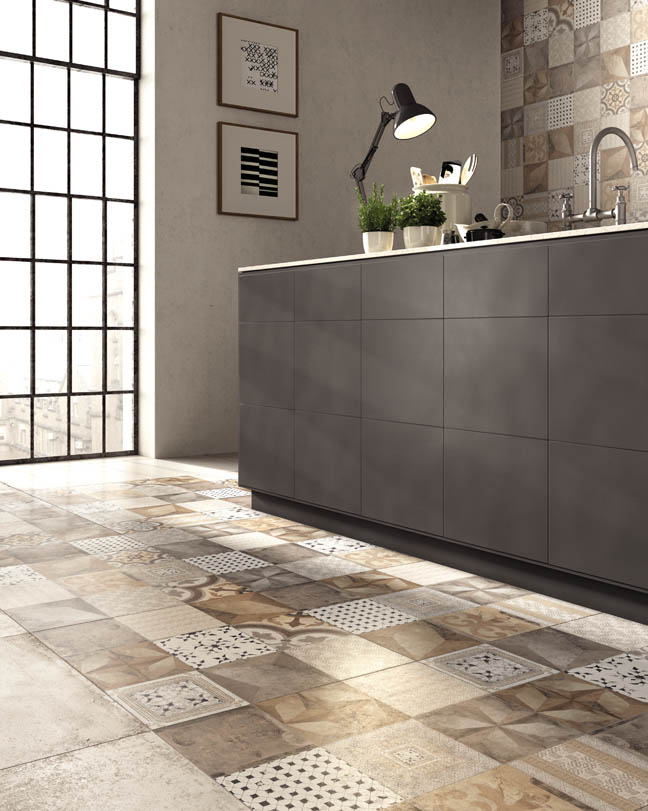Maltese Tiles: A Timeless Craft of Art and History
Knowing Malta
Discover the enchanting world of Maltese tiles, a timeless craft steeped in history and culture. Explore the artistry, patterns, and symbolism behind these exquisite works of art that have adorned palaces, churches, and homes for centuries. From the ancient Phoenicians to the Knights of St. John, uncover the legacy of Maltese tiles and their contemporary revival in modern design.
Among its many contributions to art and craftsmanship, one of the most remarkable and enduring is the tradition of Maltese tiles. These unique and exquisite works of art have adorned homes, palaces, churches, and public spaces for centuries, reflecting the island's history, culture, and creativity. In this article, we will explore the fascinating world of Maltese tiles, delving into their history, production techniques, patterns, and enduring allure.
The Making of Maltese Tiles
The process of creating Maltese tiles is a labor-intensive craft that requires skill, patience, and an eye for detail. Traditionally, the production of these tiles involved a team of artisans, each specializing in a specific step of the process.
1. Clay Preparation: The journey of a Maltese tile begins with the selection of high-quality clay. The clay is first purified, removing any impurities that may affect the final product's integrity. This step is critical, as the quality of the clay directly impacts the tile's strength and ability to withstand wear and tear.
2. Shaping the Tiles: Once the clay is ready, it is hand-shaped into tiles using wooden or metal molds. Artisans apply great care to ensure uniformity in size and shape while maintaining the distinctiveness of each piece. While square and rectangular shapes are common, the artistry lies in the intricate patterns that adorn the surface.
3. Drying and Firing: The freshly molded tiles are left to dry for several days. Afterward, they are fired in kilns at high temperatures. This firing process not only strengthens the tiles but also imparts the characteristic terracotta color, which acts as a canvas for the upcoming decoration.
4. Glazing and Painting: Maltese tiles are famous for their vibrant colors, achieved through the application of glazes and pigments. The glaze protects the tiles from wear and adds a glossy finish, while the pigments give life to the intricate patterns and designs. Master artisans carefully hand-paint each tile with precision, using brushes or stamps, creating a unique piece of art.
5. Second Firing: Once the painting is complete, the tiles undergo a second firing in the kiln, allowing the glaze and pigments to fuse permanently with the clay. This firing brings out the vibrant colors and ensures the durability of the tile.
6. Assembly and Laying: With the individual tiles complete, they are assembled into larger panels or mosaics. These panels are then meticulously laid to form intricate and mesmerizing patterns. It is in the assembly and layout that the artisans' creativity truly shines, as they transform spaces into breathtaking works of art.
Patterns and Symbolism
The designs adorning Maltese tiles are a reflection of the island's cultural heritage and history. These patterns often draw inspiration from various civilizations that have shaped Malta's identity over the centuries. Here are some common patterns found in Maltese tiles and their symbolic significance:
1. Eight-Pointed Star: The eight-pointed star, also known as the Maltese Star, is one of the most iconic motifs in Maltese tiles. It is said to symbolize harmony, balance, and the eight languages spoken by the Knights of St. John. The star's interlocking lines create an optical illusion that adds depth to the pattern.
2. Lilies: Inspired by the fleur-de-lis, a symbol of purity and virtue, the lily motif is prevalent in many Maltese tiles. The Knights of St. John adopted the fleur-de-lis as a symbol of their devotion to the Virgin Mary and their commitment to chivalry.
3. Pomegranates: Pomegranates symbolize fertility, abundance, and prosperity. They often appear in Maltese tiles as a wish for a fruitful and prosperous life.
4. Swirling Vortex: This intricate pattern represents infinity and the eternal cycle of life, reflecting the spiritual beliefs of the Knights of St. John.
5. Crosses: As a religious order, the Knights of St. John frequently used crosses in their designs, emphasizing their devotion to Christianity.
Enduring Allure and Contemporary Revival
Despite the passage of time and changing architectural styles, Maltese tiles have retained their allure and continue to capture the imagination of both locals and visitors alike. These tiles serve as a tangible connection to the past, preserving the island's heritage and traditions. Many historic buildings and churches still boast original Maltese tile installations, drawing admiration and appreciation from art enthusiasts worldwide.
In recent years, there has been a renewed interest in traditional crafts and artisanal products, and Maltese tiles have experienced a contemporary revival and are included in anything from bathrooms to kitchens. Artisans and designers are incorporating these exquisite tiles into modern spaces, blending historical charm with contemporary aesthetics. From chic cafes and boutique hotels to trendy homes and commercial spaces, Maltese tiles are making a fashionable comeback.
Additionally, efforts are underway to preserve and promote the art of Maltese tile-making. Art schools and workshops offer courses in traditional tile craftsmanship, passing down the skills and knowledge to the next generation of artisans. These initiatives ensure that the cultural legacy of Maltese tiles endures for generations to come.
The legacy of Maltese tiles is a testament to the enduring power of art to transcend time and tell the story of a nation's history and culture. From the intricate patterns and vibrant colors to the dedication and craftsmanship of the artisans, each tile is a work of art steeped in centuries of tradition.
As we walk on these tiles, we tread on the footsteps of ancient civilizations and knights in shining armor. The patterns beneath our feet whisper stories of conquest, devotion, and artistic brilliance. The revival of Maltese tiles in contemporary design speaks to their timeless allure, reminding us that some traditions are meant to live on forever.
So, the next time you find yourself in Malta, take a moment to admire these marvelous works of art. And remember, the beauty of Maltese tiles lies not only in their intricate designs but in the rich tapestry of history and culture they represent.

